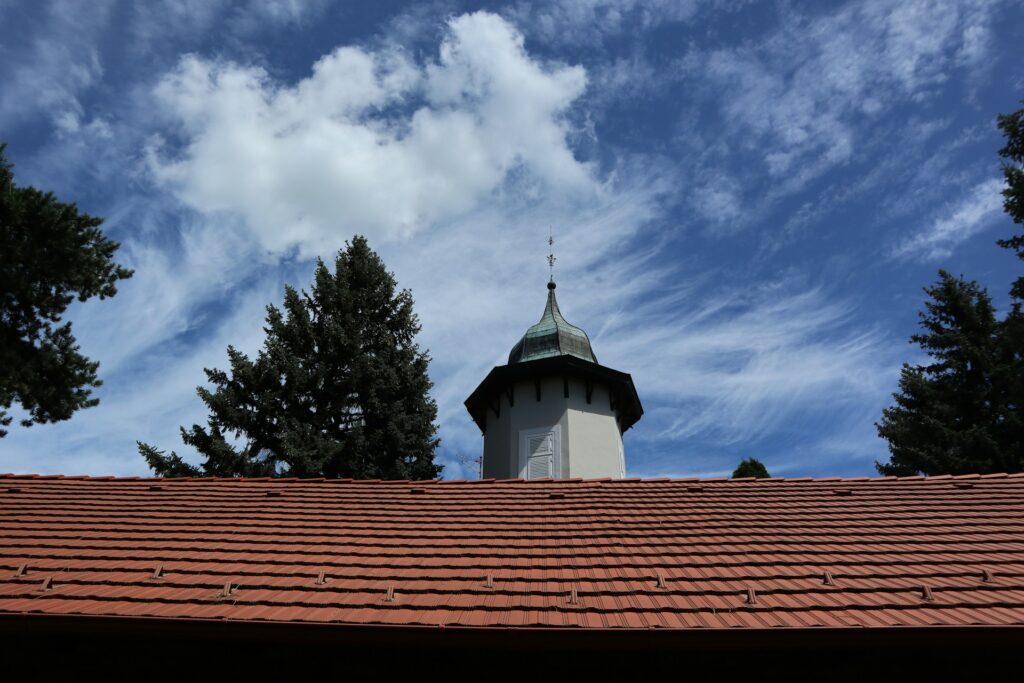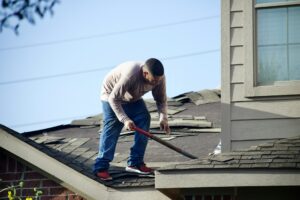A sturdy roof is a cornerstone of year-round protection for your home. While Portland’s gentle summers and famously rainy winters present unique maintenance considerations, strategic summer roof inspections can make a world of difference
By catching small vulnerabilities early, loose shingles or hidden leaks, for example, you’re protecting your environment from water intrusion and helping maintain your property’s overall value
Beneath the surface, regular summer inspections transform the way you care for your entire home. Instead of reacting when a leak finally appears, you’ll identify issues in their infancy, enjoying peace of mind and potentially saving thousands of dollars
Below, you’ll discover practical insights, step-by-step tactics, and real-world examples that illuminate how summer roof inspections safeguard your Portland Metro dwelling
Understanding the Distinct Challenges of a Portland Roof
Portland’s climate is known for showers in winter, bursts of spring rain, and comfortably dry summers. This weather pattern demands that your roof be versatile and resilient
During the rainy seasons, water can sneak under a loose shingle or cracked seal, compromising your attic space and supporting mold growth, problems that often become evident during summer’s heat
Summer emerges as the ideal season for inspection because:
- It’s generally dryer and safer to walk on the roof
- Warm weather helps reveal cracks more easily than colder, wetter conditions Minor repairs can promptly fix small problems before they balloon when the rain returns
While roofing materials have improved considerably over time, the acclaimed Pacific Northwest precipitation demands vigilant observation. Gutter blockages, moss growth, and minor cracks hidden beneath roof debris all worsen if ignored
A thoughtful, proactive approach to roof maintenance not only reduces leaks but also extends your roof’s life
Early Detection for a Trouble-Free Season
Once the skies clear and the summer sun emerges, your roof is more accessible and easier to inspect. Despite rumors that “if it isn’t leaking, you’re fine,” experts consistently recommend scheduled roof assessments. These foundational checks help uncover issues before they turn truly problematic:
- Moisture infiltration: Summer dryness can still mask hidden damage beneath roofing layers. Early detection in June or July protects against mold growth that thrives in cooler months
- Structural weaknesses: Loose flashing, and corroded or missing nails, can let water and pests breach your attic
- Preventive maintenance: Repairing small vulnerabilities, like torn shingles, ensures you won’t scramble for an emergency fix in the middle of a drenching downpour
Simply put, a thorough roof inspection in summertime, when conditions are ideal, is your ally. You simultaneously gain peace of mind and a trouble-free rainy season that rarely catches you off-guard
Inspecting from the Ground Up
Before climbing ladders or stepping onto shingles, a systematic approach starts from the ground. Save time and energy by scanning your roof’s perimeter, looking for signs of deterioration from a safe vantage point. Make special note of:
Missing or curling shingles Rusted flashing around vents and chimneys Sagging rooflines that could point to structural issues – Moss, algae, or lichen thriving in shaded areas
After your preliminary observation, check your gutters and downspouts. In Portland, falling leaves or late-spring pollen often accumulate quickly, causing clogs if left unaddressed
Remove larger debris by hand or with a garden trowel, and rinse any remaining dirt with a hose. This small step helps water flow freely along the entire roofline, minimizing the potential for pooling and wood rot
Subtle Signs You Should Not Ignore
Small warning signs can escalate quickly if you overlook them. What might seem like a benign blister or barely noticeable crack can become a serious leak the next time heavy rain slams the Portland Metro area. As you or your hired professional inspects the roof, pay attention to the subtle cues:
- Blistered or bubbled shingles. Over time, excessive heat causes moisture to expand beneath the shingles, forming pockets of air or water that may eventually burst
- Cracks along flashing. Flashing provides a seal around vent pipes, chimneys, skylights, and roof joints. When the protective metal corrodes under relentless wet weather, a path opens for water infiltration
- Granule loss. Asphalt shingles boast tiny protective granules on their surface. Noticeable buildup of these granules in gutters typically indicates your shingles are nearing the end of their lifespan
- Exposed underlayment. If you spot areas where the protective layers beneath the roofing surface are visible, it’s a red flag that calls for quick attention
If you see any questionable damage or suspect deeper problems, do not delay. Scheduling repairs or replacements in summer is usually faster and less expensive than waiting until the rainy season, when roofers may be flooded with calls and inclement weather complicates the process
Common Maintenance Mistakes to Avoid
It’s easy to think that a weekend’s quick fix will keep your roof in top shape. However, a few misguided approaches can create more harm than good:
- Pressure Washing the Roof While pressure washing might remove moss, it’s also known to force water under shingles and erode protective granules. This not only shortens the roof’s lifespan but can cause hidden leaks. Instead, try gentle cleaning methods or specialized roof moss treatments
- Overlooking Ventilation and Insulation A balanced attic environment relies on proper ventilation, especially in warm weather. If summer heat becomes trapped in your attic, the resulting temperature fluctuations stress your roofing materials and trigger premature wear
Furthermore, inadequate insulation allows temperature gradients that can encourage condensation in corners. Check vents for blockages and ensure your attic insulation meets current standards
- Self-Repair Without Proper Knowledge Climbing onto the roof with no safety equipment or expertise can worsen damage, injure you, or void warranties. Sometimes, well-intentioned do-it-yourself fixes cause bigger problems
Whether you hire a certified professional or watch online tutorials like those at Family Handyman, double-check your methods and use appropriate materials to prevent further complications
- Ignoring Minor Leaks A small drip you noticed in your attic come winter or a water stain on your ceilings might seem like yesterday’s problem if it disappears during summer dryness. Yet ignoring it sets your home up for repeated damage once those Portland rains return in full force
If you observe any signs of moisture, investigate proactively and address the root issue now
Proactive Monitoring with Technology
Summer roof inspections aren’t limited to climbing a ladder with a flashlight. Technology provides valuable tools to identify minor roofing risks:
- Drone photography offers a detailed roof overview, reaching even the steepest angles without the danger of a personal climb. Drone inspections help pinpoint potential weak spots, and the recorded footage is easy to review alongside a construction expert
- Infrared scanning uncovers trapped moisture pockets and abnormal temperature variations in your roof. There are local Portland-area contractors that specialize in thermal imaging, helping you detect water infiltration early before mold sets in
When combined with regular manual inspections, these modern methods provide an extra layer of assurance. They let you confirm or dismiss suspicions quickly, enabling you to schedule repairs as soon as you spot red flags
Real-World Example: The Johnson Family’s Experience
The Johnson family lives in a charming 1950s bungalow near Walnut Park. Last year, they ignored a small DIY patch their neighbor had installed to address a cracked shingle, knowing the drier summer months would likely keep water from seeping inside
According to their logic, “We’ll handle it in the fall if it’s still a problem.”
Over a busy season, that tiny crack expanded. When autumn diurnal shifts brought renewed moisture, the disguised leak worsened and eventually caused water stains inside their daughter’s bedroom
Not only did they have to replace soaked insulation and fix damaged drywall, but the underlying plywood required partial replacement. What might have cost a few hundred dollars in repairs ended up exceeding $3,000
Their story reveals the common pitfall of “fixing it later.” Had they scheduled a professional summer inspection right after seeing the damage, they would have saved time, money, and hassle
Professional Roof Inspection Versus DIY
Some confident homeowners enjoy performing routine checks themselves. You can spot obvious red flags, like curling shingles or clogged gutters, before calling a contractor
However, a professional roofer’s expertise can unearth deeper, less apparent issues. Paying for a thorough check once a year (or every other year, depending on your roof’s condition) is typically less expensive than addressing full-blown damage
Rather than assuming one approach fits all, consider your unique situation. If your roof is under warranty, check any stipulations about who can perform inspections
Even if you prefer do-it-yourself methods, do not hesitate to bring in trained pros like those recommended by the National Roofing Contractors Association to verify suspicious signs
Cost Versus Investment
It’s natural to wonder how much roof repairs or inspections might cost. Keep in mind, though, that each small investment in maintenance pays off by preventing widespread destruction or a premature need for a roof replacement. Consider the following cost breakdown:
- DIY supplies like roof sealant, replacement shingles, roofing nails, or patches might cost around $100 to $200 for minor repairs Professional repairs for localized damage often run between $300 and $1,500, depending on your roof’s size and the extent of the problem
- Full roof replacements range from $5,000 to $20,000 or more, based on roofing materials, complexity, and labor fees in the Portland Metro area
When weighed against worst-case scenarios, routine summer inspections become a straightforward, essential line of defense, helping you stretch your existing roof an extra few years and avoid the burden of urgent replacements
Harnessing natural development: Moss and Algae Removal
Portland’s damp environment supports not just luscious greenery but also relentless moss and algae growth on your roof. While these growths may appear insignificant at first glance, they can do significant damage if neglected:
- Moss acts like a sponge, holding excess water on your roof’s surface. Over time, that moisture seeps between shingles, causing cracks and leaks
- Algae can leave black streaks, weakening the roof’s visual appeal and potentially affecting energy efficiency
- Aggressive lichen can even burrow under shingle edges, prying them open
Use a moss-killing solution specifically designed for roofs, applying it during dry weather to allow full absorption. Regularly removing debris and trimming back overhanging tree branches also improves airflow and sun exposure, which naturally retards moss growth
Practical Maintenance Tips
A thorough summer roof inspection sets the stage for ongoing vigilance. Here are more ways to protect your home:
- Regular Gutter Checks: Clean gutters at least twice per year, usually after heavy leaf fall and mid-spring, to ensure free drainage
- Inspect Attic Spaces: Look for signs of moisture or mold on rafters and insulation. Even slight moisture spots may be a warning of leaks you might not see from outside
- Keep Trees Trimmed: Branches contacting the roof can scrape away granules or knock shingles loose during storms. Proper pruning is a lasting safeguard
- Schedule Routine Checks: A quick look every other month, especially if you have older roofing, can help you spot changes early
Small, consistent habits reshape how you care for your property. Instead of frantic, costly fixes, you’re staying ahead of potential roof troubles by weaving maintenance into your regular homeowner routine
Shaping a More Secure Future
Understanding the importance of proactive summer roof inspections is a first step, but the ultimate key is consistent action. This new approach to protecting your home reflects a broader decision-making philosophy, one rooted in continuous observation, steady upkeep, and embracing cutting-edge tools when necessary
By fusing these elements into your summer routines, you support your property’s longevity and help protect your family’s safety, comfort, and finances
Embrace these straightforward steps and ensure that each passing season leaves your roof more resilient than ever. When the Portland winter rains inevitably return, you’ll watch them cascade off your well-maintained roof, comfortable in the knowledge that you’ve taken vital, proactive measures
And in that sense, your summer diligence now is worth its weight in peace of mind
Moving Forward with Confidence
Your home is a long-term investment, and your roof is its frontline defense. This summer, examine your roofing structure with heightened awareness
Observe subtle changes in shingle integrity, remove gutter debris methodically, and investigate any hidden cracks before they morph into rainy-season headaches
In time, adopting a summer roof inspection habit becomes second nature. You’ll notice small details sooner, prioritize them correctly, and sustain your property in a continuous flow of preventative maintenance
Alongside professional input where needed, each seasonal inspection sets the tone for a well-guarded household, no matter what the Pacific Northwest weather brings next
May this knowledge empower you to take intentional steps, ensuring your roof outlasts storms of every season. By weaving together observation, timely adjustments, and innovative technology, you transform your house into a confident, secure place to live for years to come.




